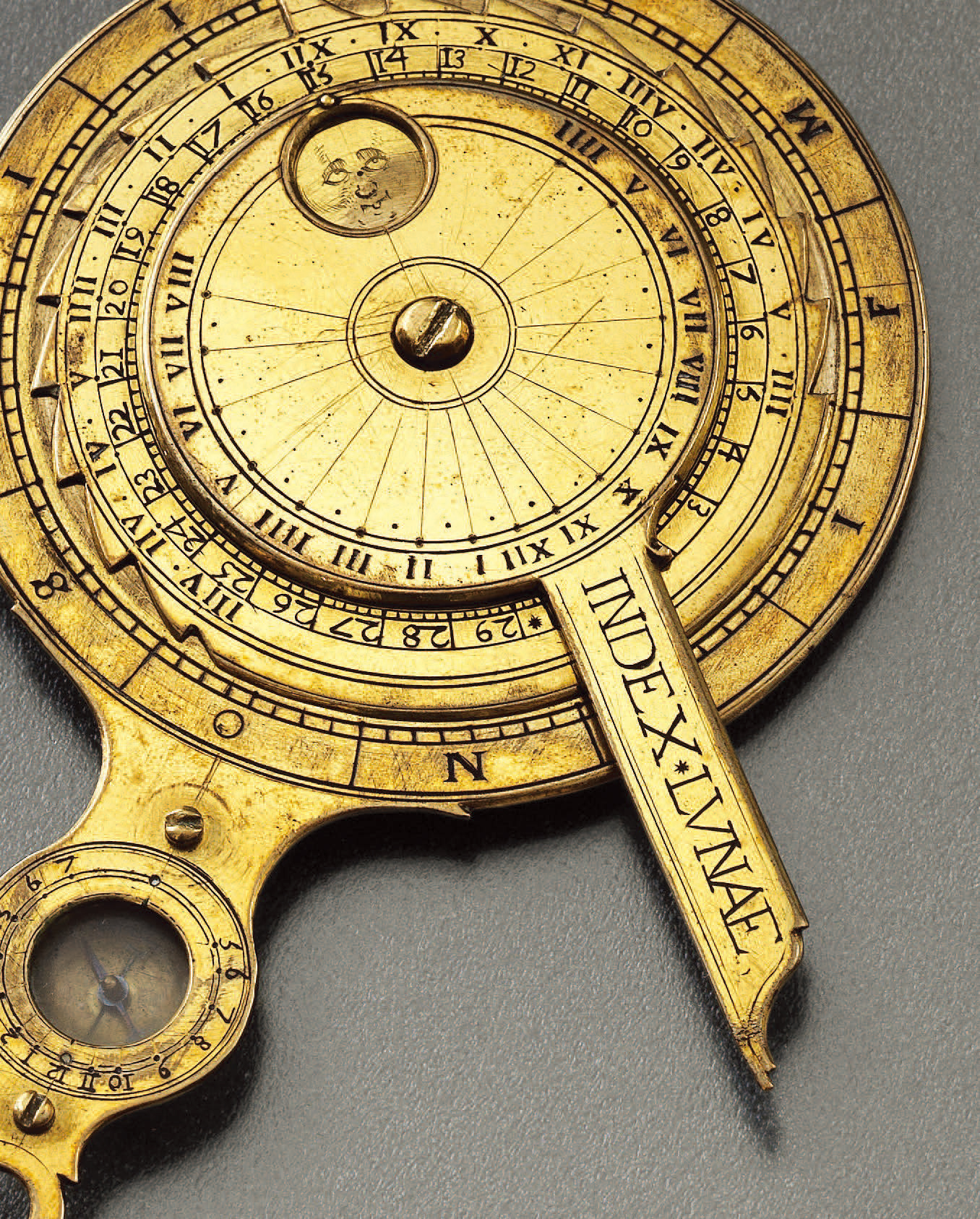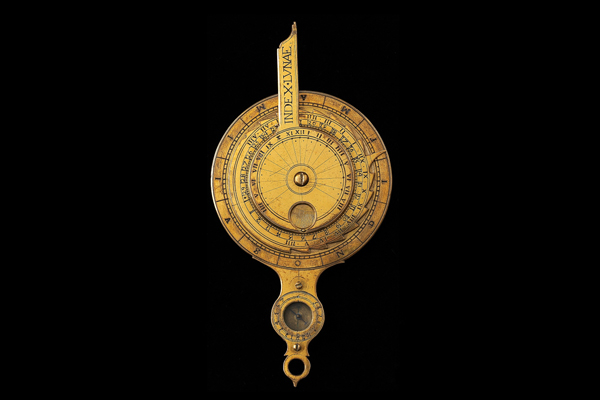Collection Search
Nocturnal
- Nationality France
- Quantity 1
- Era 1588
- Exhibition Place Storage
- Material Metal
- Size(cm) diameter 6.8, lenght13.6
A nocturnal, or night-dial, is an instrument that measures local time based on the relative locations of specific stars, and is used at night primarily for navigation.
Knowing the time was important in calculating tides during navigation, and some nocturnals incorporated tide charts for key ports.
This nocturnal consists of three copper discs or dials placed one on top of another.
The outer disc shows the twelve months of the year and the middle disc shows dates and hours, while the innermost disc has a rotating alidade, or pointer.
In addition, the center pivot point has a hollow rivet for observing the chosen reference star used to measure local time, but this has been replaced by a screw pike to fasten the three discs.
On the handle is a small compass, and on the other side are a disc engraved with constellations and a disc with illustrations superimposed on the other disc.
On the back of the disc is the number “1588,” assumed to be the year it was made.
To use a nocturnal, the mariner first aligns the appropriate tooth of the inner disc with the current date on the outer disc.
The mariner then sights the North Star, Polaris, through the hollow rivet at the center of the instrument and rotates the pointer of the innermost disc until it is indicating the chosen reference star.
The local time is then indicated on the inner disc.
The nocturnal functions to measure local times by observing selected reference stars in combination with the North Star, according to date and time of year.
The reference stars most often used are Dubhe and Merak, the pointer stars in the Big Dipper of Ursa Major, the Great Bear.

